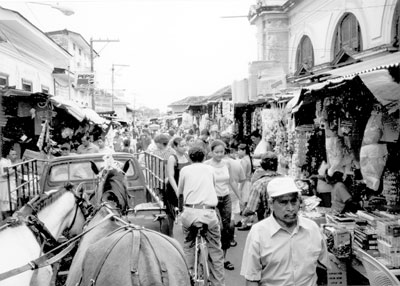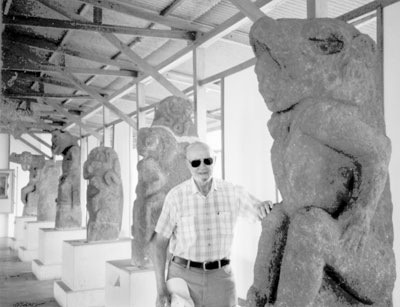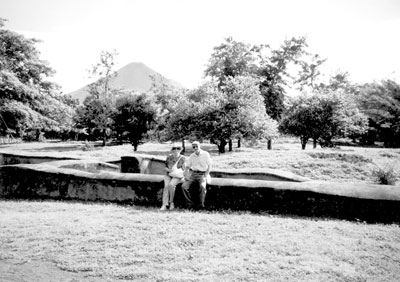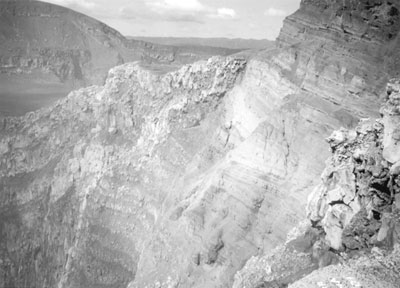Travels in Nicaragua
My husband and I spent a lovely week in Nicaragua, Nov. 10-18, ’03.
We were met at the Managua International Airport by our guide, Cristian Quintanilla, and driver, Luis. We had made all the arrangements for this trip by e-mail with Cristian (e-mail jbfuntoursni@yahoo.com) and were very pleased with them all.
For two persons for five days (plus airport transfers for two other days), and including excellent balcony rooms in the Hotel Alhambra as well as the Hotel Austria, many meals, all tours and private English-speaking guide plus car and driver, the cost (not including airfare) was $1,080.
In Granada, our chosen base, we found the Hotel Alhambra charming — very Spanish, with tropical plants in the large, open-air lobby, a terrace restaurant, a fine room with balcony overlooking the town’s main plaza, plus cable TV with 70 channels and Internet access.
Cristian took us for a most informative city tour in one of the many horse-drawn carriages. Granada, very provincial Spanish, was founded in 1524 on the shores of Lake Nicaragua. The leisurely speed of the carriage was a pleasant way to see all the sights, from the Church of Guadalupe, which had been sacked by pirates three times, to the old hospital Granada hopes to make into a 5-star hotel.
The last stop was the Convent and Church of San Francisco, which is now a museum. It is famous for the statues brought from a nearby island by U.S. Ambassador Squier in the 1800s. Most of the statues are from the Chorotega culture of about A.D. 800-1200.
Later we stopped at the plaza and had one of the ubiquitous fresh fruit drinks Jugos Naturales, almost a fruit smoothie, which became a favorite of mine.
One afternoon we went with Cristian to the port for a picturesque cruise through some of the 360 islands in the Isletas Archipelago, all in the shadow of nearby Mombacho Volcano. Most islands were tiny and uninhabited, covered with tropical jungle and complete with spider monkeys, white-faced monkeys or howler monkeys. There were also dozens of islets of an acre or more that had just one house each.
As we returned to Granada Harbor in the darkening twilight, we passed three large mangrove trees where hundreds of white egrets were flying in to roost for the night — a fantastic sight!
Cristian and Luis drove us to the top of 1,600-foot Masaya Volcano. We went to the rim, walking around trying to hold our breath as we looked down into the rising sulfurous, noxious steam. The crater was probably 100 yards wide and very, very deep. It is part of an older, larger volcano and still very active.
Next we went to the nearby town of Masaya, the site of some of the best craft markets in Nicaragua. At a tiny pottery-making shop I bought a large, engraved, Maya-style vase.
The following day (a “free” one we’d requested for more picture taking), we strolled to Granada’s bustling main market area and through the neighborhoods — no problems. We saw a few groups of European tourists but no other Americans.
That evening there was a festival in the plaza and we heard intricate drumming for nearly an hour. There was also some lovely singing next door at the Cultural Palace, an old palace now used as a community center for musical and dance performances and lectures.
On Saturday we drove to the capital, Managua, which was severely damaged by earthquakes in 1931 and 1972. It really has no downtown, although there are a million people sprawled over a large area on the shores of Lake Managua. We felt Managua definitely did not have the charm of Granada.
We stopped first at the large hill in the city center which is a national historical park. The most interesting sight was a 42-foot-tall metal silhouette sculpture of General Augusto Sandino, still a hero to many Nicaraguans. We toured the area of the president’s palace, the municipal cathedral and the president’s home — not even a guard in front.
We next stopped at the Museo Las Huellas de Acahualinca, which has footprints from 10,000 years ago — some of the most ancient evidence of humans in Central America. They were discovered in 1874 under many layers of volcanic ash and mud.
Driving farther north we reached León, which was more like Granada, with a nice main plaza and the largest cathedral in Central America. We stayed overnight at the pleasant Hotel Austria.
The main reason for our trip north was to see León Viejo, Nicaragua’s only UNESCO World Heritage Site. León was founded in 1524, same as Granada, but nearby Momotombo Volcano erupted and sent the town scurrying in 1610 to the present site of León. In León Viejo only ruins are left, but the local guide showed us the bases of merchants’ homes and stores. The best ruins were of the Convent and Church of La Merced. We walked up a hill to the old fort for a lovely view of Lake Managua and Volcano Momotombo.
Nicaragua’s 56 volcanoes, 14 active, are an important factor in its history and present lifestyle.
On our last evening in Granada we went over to the crowded and noisy plaza and found a real treat. Two men were setting off rockets and fireworks, with a fire truck ready to protect the crowds. Soon we saw a large group carrying candles and leading a long procession in which men were holding a platform with a statue on it. They slowly made their way into the cathedral. The celebration was for the saint San Martin de Porres.
There were many food and craft booths around the park, plus musicians (especially drummers) and dancers — a real fiesta and a wonderful ending to our Granada visit.
MARGO SPEARS
Reno, NV




